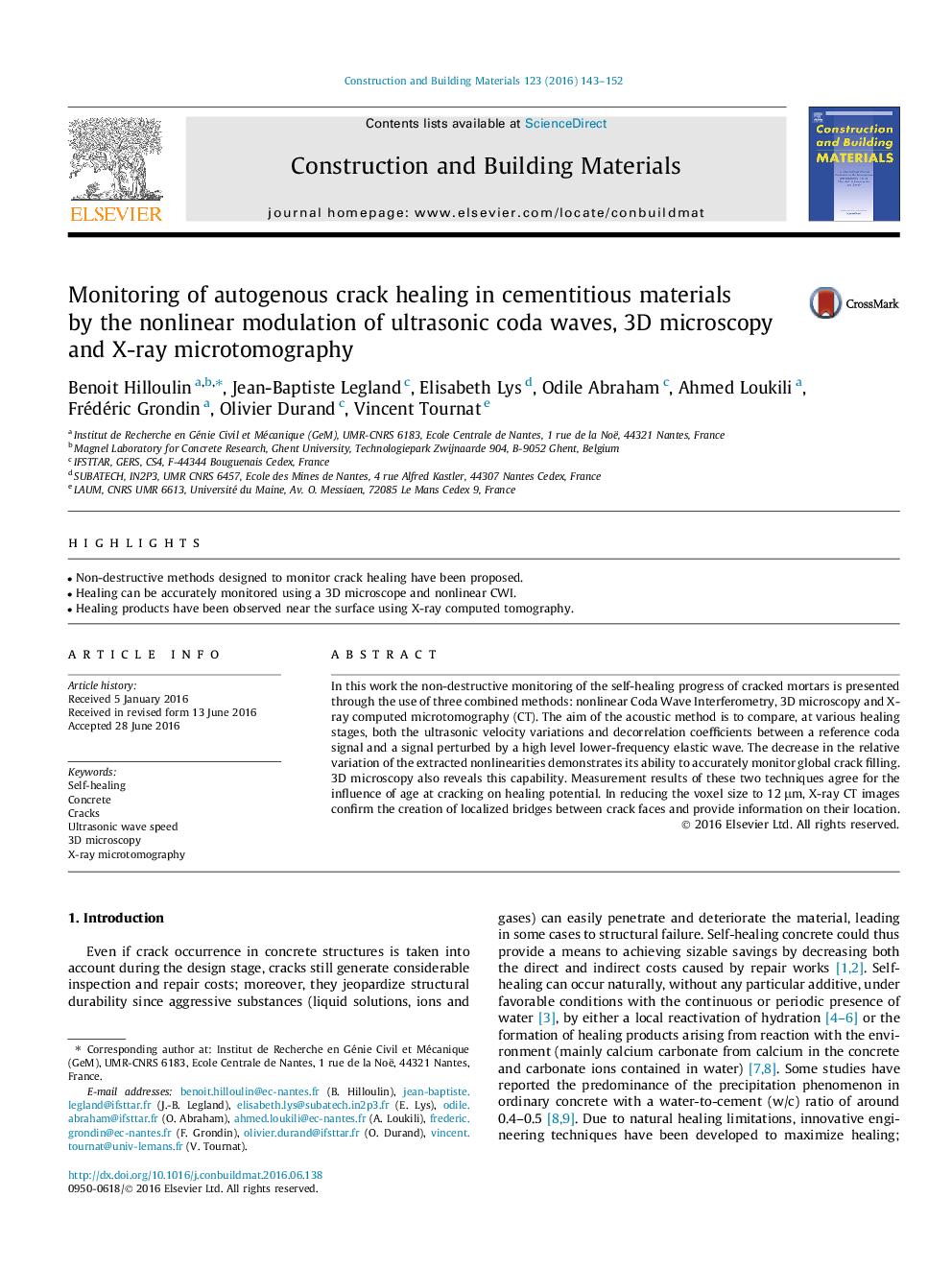| Article ID | Journal | Published Year | Pages | File Type |
|---|---|---|---|---|
| 255738 | Construction and Building Materials | 2016 | 10 Pages |
•Non-destructive methods designed to monitor crack healing have been proposed.•Healing can be accurately monitored using a 3D microscope and nonlinear CWI.•Healing products have been observed near the surface using X-ray computed tomography.
In this work the non-destructive monitoring of the self-healing progress of cracked mortars is presented through the use of three combined methods: nonlinear Coda Wave Interferometry, 3D microscopy and X-ray computed microtomography (CT). The aim of the acoustic method is to compare, at various healing stages, both the ultrasonic velocity variations and decorrelation coefficients between a reference coda signal and a signal perturbed by a high level lower-frequency elastic wave. The decrease in the relative variation of the extracted nonlinearities demonstrates its ability to accurately monitor global crack filling. 3D microscopy also reveals this capability. Measurement results of these two techniques agree for the influence of age at cracking on healing potential. In reducing the voxel size to 12 μm, X-ray CT images confirm the creation of localized bridges between crack faces and provide information on their location.
